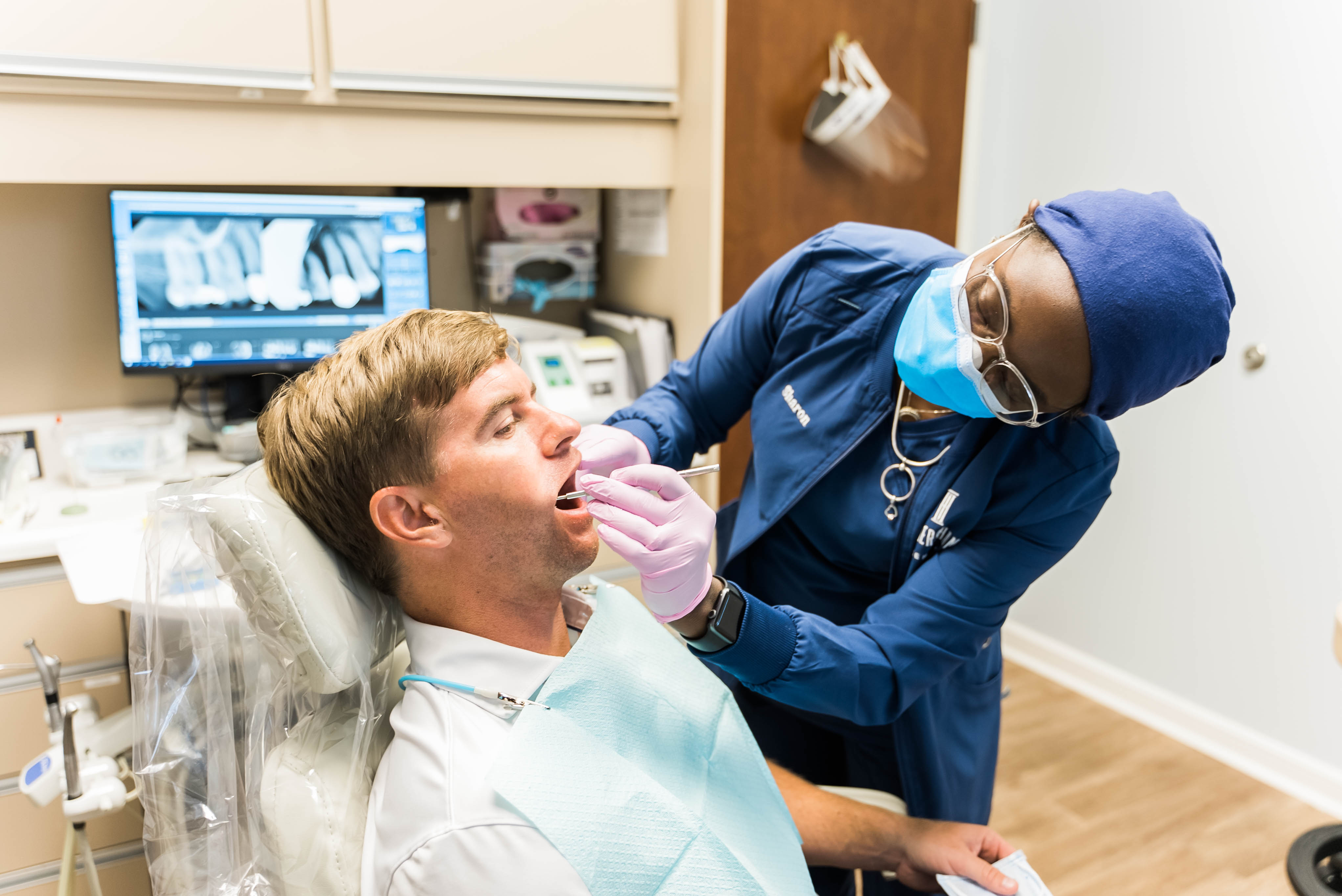Deciding whether or not to become a fee-for-service dental practice can be a big decision for dentists. Change can be overwhelming, but you’re curious if the pros of becoming a fee-for-service provider outweigh the cons.
Could it be profitable for your practice to go out of network and become a fee-for-service dental practice?
Dental ClaimSupport also works with fee-for-service practices. We help them submit their insurance claims so that patients can be reimbursed quickly and accurately. Through experience with these types of practices and others, we understand the benefits and drawbacks of being a fee-for-service dentist.
Whether or not becoming a fee-for-service provider is right for you depends entirely on your practice and its structure. There’s no right or wrong option.
In this article, you will learn the pros and cons of becoming a fee-for-service dental practice. Weighing these factors will help you decide whether or not being fee-for-service is profitable for your dental practice. This article will give you a full-picture understanding of what this change will mean for your practice.
Let’s start with a recap of what a fee-for-service dental practice is.
What is a fee-for-service dental practice?
A fee-for-service dental practice is an out-of-network practice. The practice will still accept insurance, they will charge the full provider fee for the procedures provided. When a practice is in-network with insurance providers, the fees are determined by the negotiated provider fee schedule with the contracted insurance company or leased network.
A fee-for-service practice will define its own financial policy in one of two ways:
- Have the patient pay the full fee of the procedure at the time of service - The patient will then be reimbursed by their insurance provider. Most offices will send the claim electronically for quick reimbursement and assist the patient with any questions they may have.
- Or “inform before you perform” - The estimated patient amount due (with a signed financial agreement that highlights that this is only an estimated amount due) and request the estimated co-payment at the time of service. The patient will receive a statement if there is any amount due or credit due after the insurance has paid their estimated portion.
The big difference is just who is being reimbursed by the insurance carrier. If the second option is used, the practice will be reimbursed by insurance which will then reimburse the patient. The first option is clearly more time-efficient.
Now let’s get into the pros and cons of becoming a fee-for-service dental provider.
Pros of being a fee-for-service dental practice
For some practices, transitioning to a fee-for-service practice can be really profitable and beneficial. It largely depends on the area you live in and the types of patients you see.
Here are the benefits of being a fee-for-service.
You collect everything you are owed from the patient immediately
When your patient comes in, they have their procedure, and then they pay the entirety of that fee.
This can be great for your profit margins. You’re collecting 100% of what you are owed. Many dentists who are not fee-for-service will collect their patient’s estimated out-of-pocket costs, then depend on insurance to send the rest of the fee.
This can cause confusion if the insurance plan determines if your fee is higher than the UCR (usual, customary, and reasonable) fee. Or if the specialist’s claim was received after you reviewed the insurance benefits with the patient.
The patient will then have a reduction in the remaining insurance maximum benefits or it will be exhausted altogether.
Under collecting can lead to practices not having a healthy net collection rate above 98% of the adjusted production.
You can avoid this altogether by collecting your full fee from patients at the date of service. And this is possible if you are a fee-for-service practice!
More focused patient care
When you become a fee-for-service provider, your practice is not going to be in-network with any insurance plans including:
- PPOs
- PDPs
- DHMOs
- DHOs or Capitations
So you may have fewer patients that find you via their insurance plans. This means you can hyper-focus on current patients. You and your dental team will feel less pressed to squeeze as many patients in per day.
This can lead to higher quality patient care.
You will have more time to create relationships with each patient and explain their treatment to them. Your practice will become more marketable with more patient referrals due to the relationship and time spent with them.
Sadly, patients do not know good dentistry if it bit them! They just know you took your time with them and built that relationship of trust and confidence - so providing fantastic patient care is very valuable to your revenue.

Cons of being a fee for service dental practice
When you go out of network with insurance providers, you may need to increase your marketing efforts and budget. Patients will no longer find you in their dental insurance portal as an in-network provider.
This is a big reason why a fee-for-service dental practice is not necessarily a good fit for everyone. There is no one-size-fits-all type of practice you should subscribe to.
Let’s get into the other big cons of being a fee-for-service dental practice.
Loss of patients
We mentioned losing patients above in the pros. But this could also be a con for practices that have a hard time retaining patients.
Charging a full fee might not be ideal for some patients.
If you hand over a bill that’s a couple of hundred bucks, they might panic. Even though their insurance will reimburse them in a few weeks - not everyone wants to drop this amount of money in one sitting.
So, if you do make the transition to fee-for-service, you might see a few patients drop off due to having to pay full fees upfront. And if you are in a place where you can’t afford to lose patients, this might not be the best choice for you.
Even if you only collect the estimated patient portion, you may lose the patient because they have to now be charged for treatment above the PPO allowed amount making the patient payment higher.
Some PPO plans will reduce the percentage of coverage as well as the maximum allowance and they even go as far as to increase the deductible amount. This is all to discourage the patient from going out of network. Some other plans have NO out-of-network benefits at all!
More of a need for patient benefit education
Truly - you should always be educating your patients on their benefits no matter what kind of dentist you are.
But to prepare your patient to pay their full fee, you need to take the time to explain their benefits to them.
You will explain that you are a fee-for-service provider and their insurance will reimburse their portion in a few weeks with a check in the mail. You should also give them an estimation of how much they can expect from the check in the mail in a few weeks.
Let them know that you file their claims electronically for faster reimbursement.
This will better prepare them to pay you their full fee, knowing they will be eventually reimbursed. The reason we list this as a con is that this is a time-consuming task to sit down with each patient to explain this.
But it’s necessary for providing a good patient experience AND making the patient collection process smooth.
If your team doesn’t have time or skill for this kind of communication, fee-for-service might not be the best option for you. Or you may want to develop a plan or work with a practice consultant or coach to get you there
Ready to learn how to submit a dental insurance claim if you’re a fee for service practice?
You now understand both sides of fee-for-service. You can increase your cash flow by always collecting your full fee while also improving patient care. But you can also lose some patients due to high fee costs. And taking the time to explain how your fees and claim reimbursement process works can add work to your team that they do not have time for.
If you’ve read this and you’re still interested in becoming a fee-for-service provider, Dental ClaimSupport is a great option to help you submit claims to insurance companies, and make sure your patients are reimbursed in a timely manner.
To dive deeper into how insurance claim submission works as a fee-for-service provider, visit our Learning Center.
Related Posts
Dental revenue resources from Dental Claim Support





